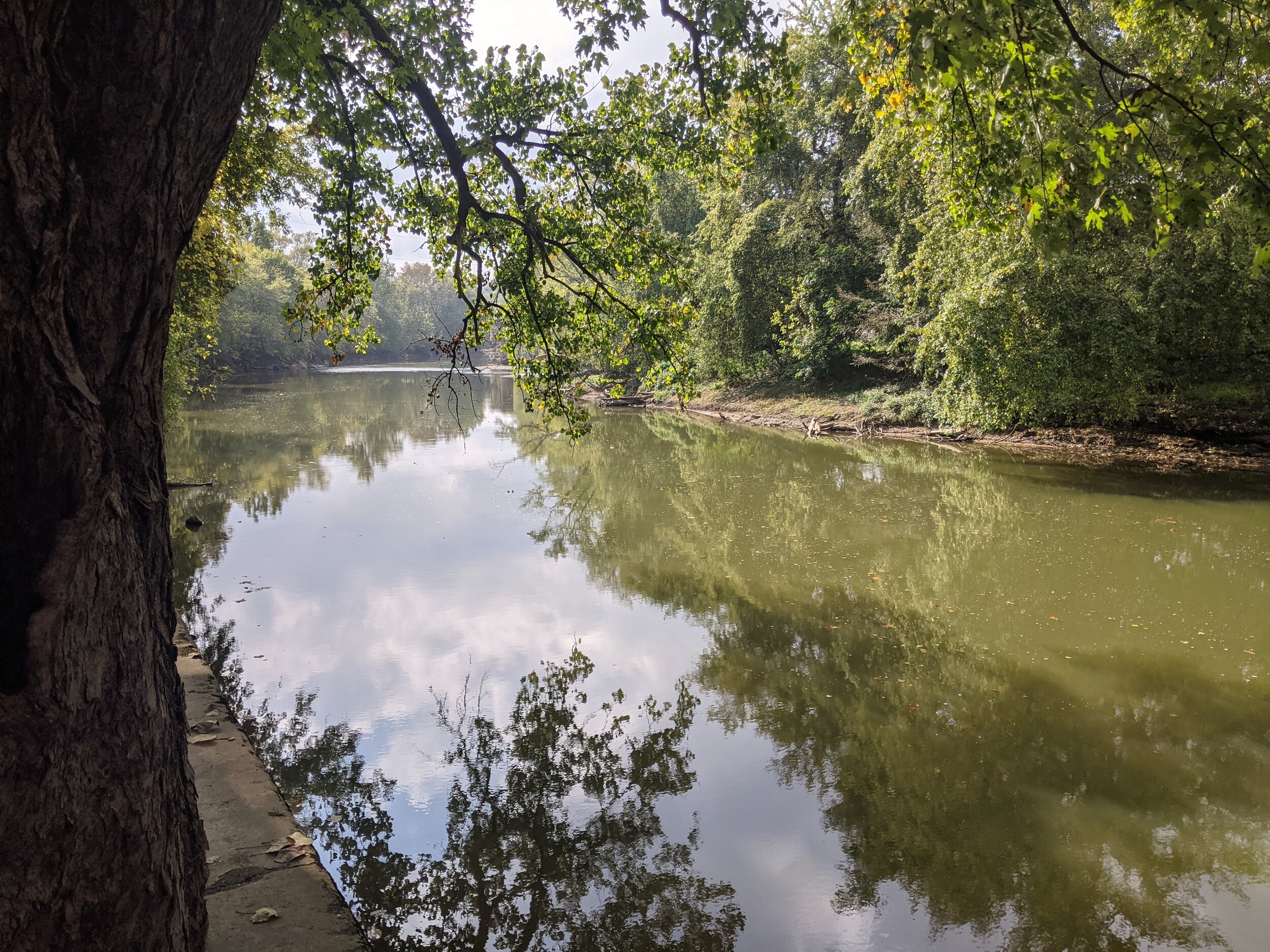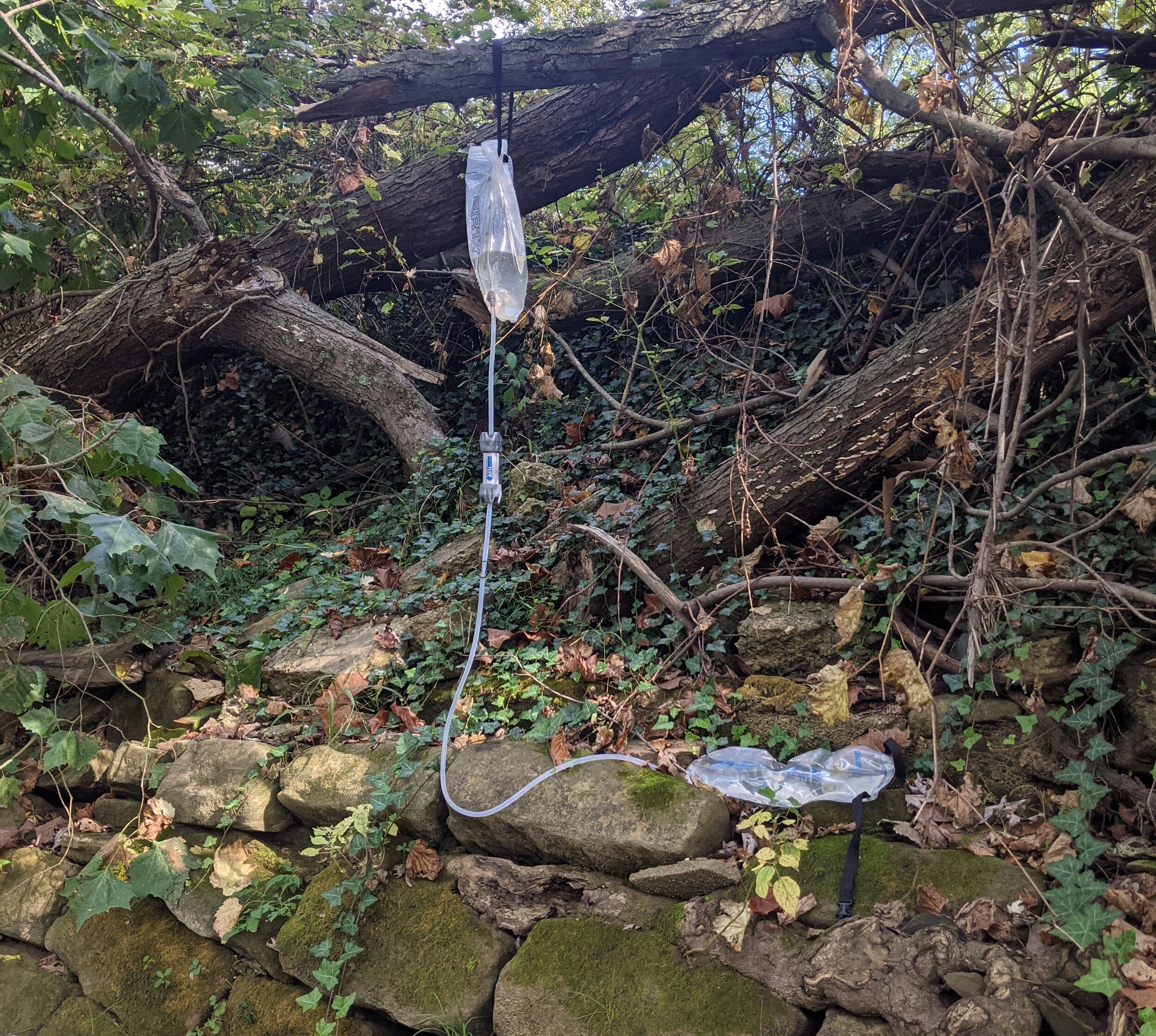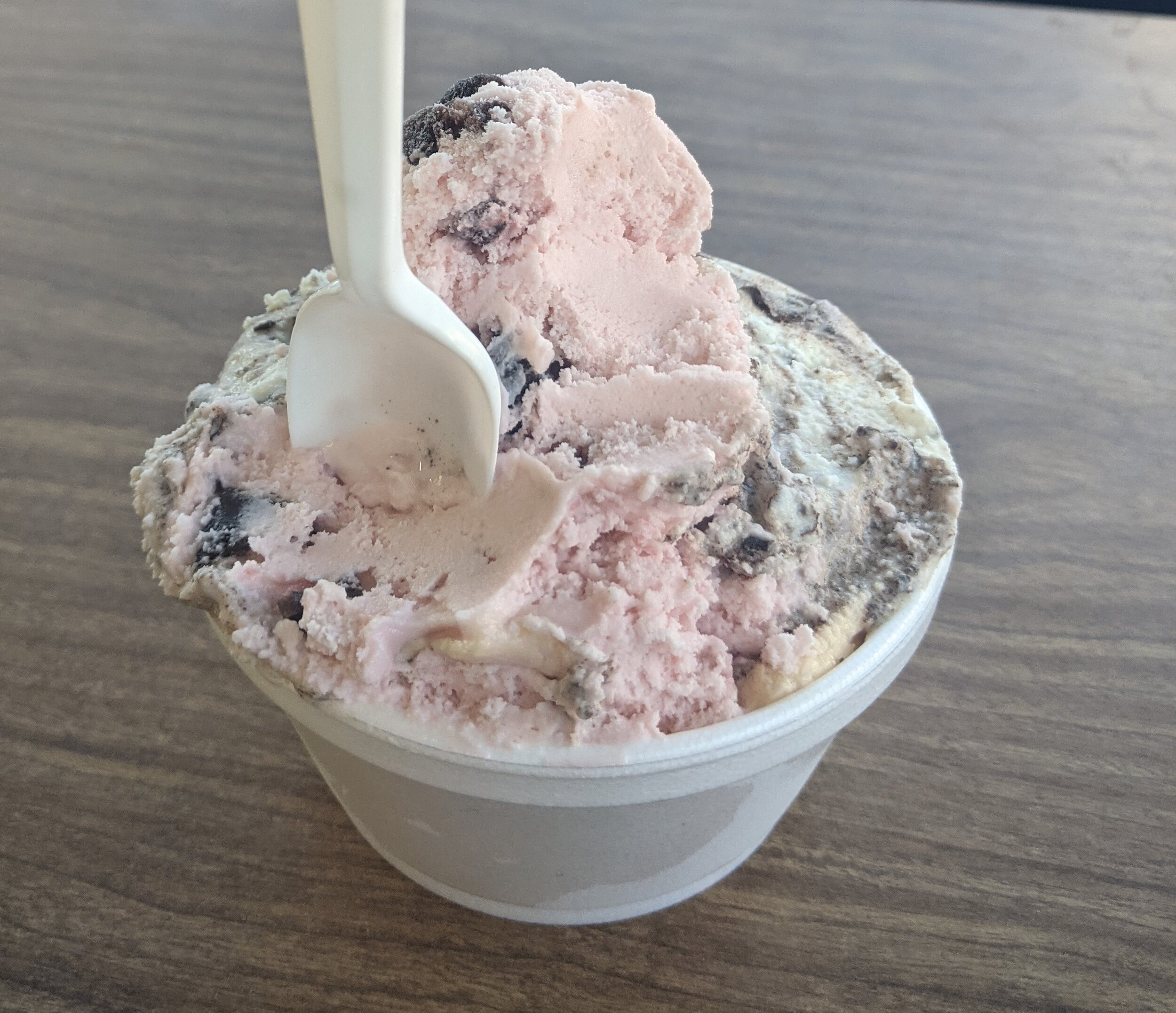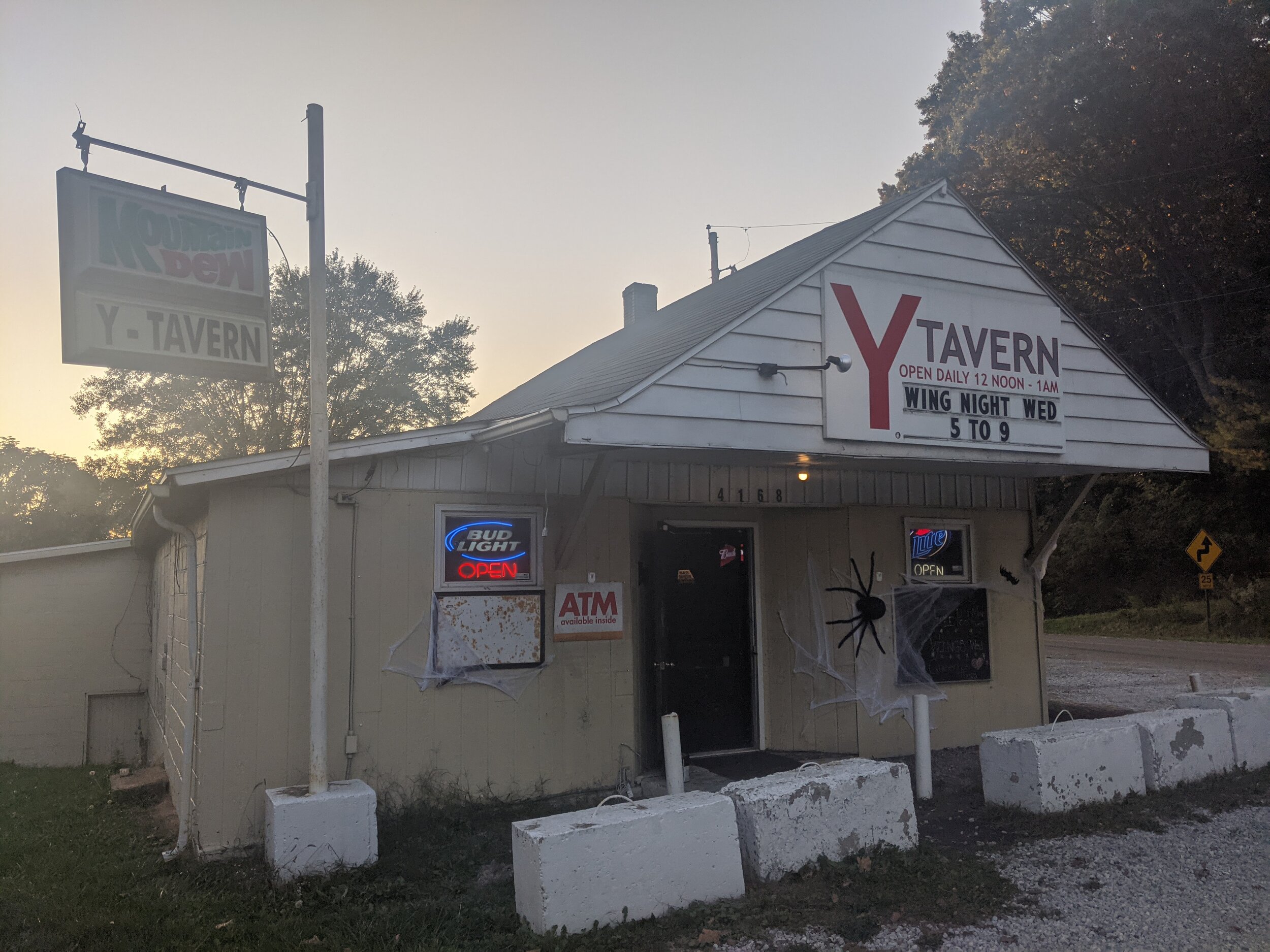Day 6
October 9, 2021:
I got up pretty early, at around 4 am to take a slash. Just as I was getting back to sleep, I heard something, faint at first. A ringing sound, like metal bending. I knew immediately what it was: it’s the distinctive sound of a train approaching on the tracks. About a minute later, the roar of the engines could be heard, slowly increasing in volume. The train blew its horn, deafening me momentarily. Then the lights crossed my tent, making silhouettes of the trees against it. The engine noise was so strong it felt as though the train were right on top of me. It was terrifying. As the locomotive passed, the ground shook. Then came a hellish sound, like that of metal cutting into or scraping across the tracks. Maybe some of the wheels were sliding rather than rolling, or maybe the train was braking to slow down for a station. Whatever the cause, the hellish noise repeatedly sounded, coupled with the vibrations in the ground and the thunderous noise of the passing cars. And then it was gone, down the track to the west.
The night train had me bolt awake, and it took a while for me to start drifting back to sleep. Maybe half an hour later, just as I was on the edge of consciousness, it started to rain, hard. It was sudden and without warning. The drops pounded the canvas rooftop of my tent, dribbled down the side, and soaked the foliage all around me. The screen window was closed, but the canvas cover for the doorway was open. I had left it that way since the probability of rain was so low for that evening. I opened the screen door and struggled furiously with the canvas covering, attempting to pull the zipper up into position. It kept getting stuck on something, but I ultimately got it closed. I listened to the rain cascade around me. Normally the sound of rain gives me peace, but now it was a source of tension. I wondered how the tent would fare. Thankfully, the rain was short-lived, and just fifteen minutes later, had passed.
The rest of the night was uneventful, and I did ultimately make it back to sleep. When dawn broke, I was up, and quickly packed my things. I was eager to set off for a big day ahead of me, and knew my camping spot wasn’t especially secluded so needed to get a move on to prevent discovery. This process was made a bit more challenging with everything so wet. Extricating my bike was a bit of a nightmare. Every time I touched a branch, a cascade of water would fall from it, dowsing my shirt. The mud ditch I had crossed the evening before was now a small creek lined with deep mud banks. And getting the bike up to the trail was a literal uphill battle against a slippery incline. But at last, I made it up, and was ready to go.
Visibility was very low as the result of a thick, low-hanging fog. I reached the end of the Panhandle trail and turned to follow a country road to Frezeysburg. Per Ohio law, bicycles are treated as vehicles, and are permitted on nearly every road with the exception of interstates and major freeways. So despite feeling a bit uneasy, bicycling at the side of this highway was legal.
I made good time to Frezeysburg, stopping at a Family Dollar for two cans of soup and a box of poptarts. I had hoped for fresh bread with Nutella, but bread isn’t something you can really find at dollar stores; it just doesn’t hold. Poptarts really aren’t that good, but they’re not that bad either. I wanted something bready, and they sort of fulfilled that purpose.
Outside, two men were talking. One sat in a truck – maybe an F150? – and the other inside a large ATV. I opened my box of poptarts and got two out to eat for breakfast. It began misting softly. One of the men looked over at me. “You’re biking on this morning?!” “Yes sir I am. Just came all the way from Cincinnati too.” The man chuckled like it was the best joke he’d heard all week. They asked about the trip and how I’d made time for it. “Must be nice getting to travel and not having to work.” And the other added “But you’ll have to get a job someday!” I mentioned how I was funding the trip through savings, but that yes, ultimately, I’d have to find something. Thankfully, I have a college degree, so that should help. They asked what my degree was in. “I’m an engineer.” “Oh, heavens! I don’t have enough brain cells for that. We need people like you.” “Ah, you’re fine. It’s not like I’m using it right now either.” I said, pointing at the bike. “Haha, nah, your legs must be rather sore.” “They are, haha.” “So are you guys farmers, then, or what?” “Nah, we wish we were. … Oh you wouldn’t believe this! – I spoke to my granddaughter the other day, and she doesn’t even know what a hay bale is!” “How old is she?” “18!” “She live in the city?” He nodded grimly. “Well I’d better get going…. Nice meeting you.” “Nice meeting you too.” He started the ignition on his ATV and peeled off. The other guy introduced himself as Bill, then left as well. I went back inside to throw away my trash, then put my gloves back on and went further down the road.
Following the country highway, it soon became apparent the scale of the carnage the road had on local wildlife. There were bodies of roadkill rotting into the pavement every few feet. Some were clearly recent, and still had mass and figure, whereas others had been ground to a pulp or were just shattered bones lying at the side. I paid careful attention to the road, hugging the shoulder to ensure I didn’t join their ranks as roadkill myself.
After a cornfield, I saw a post with a plane mounted to the top. It read ‘Ohio Bush Planes’ and a gravel road led off to the right. I decided to follow it, despite another sign a little further that read ‘Prayer is the best way to meet the Lord. Trespassing is faster.’ A few feet in, just past the cornfield, was a small clearing with a small white building labeled Graham Field. And in front of it, on the lush green grass, was a shiny black biplane with a rotary engine named Strip Teaser. A long mowed lawn ran the other way, between two corn fields, with landing lights strung along both sides. Per a sign, this was runway 8-26, length 2000’, at 725’ MSL, left traffic, using CTAF 122.9. Another sign warned of the hazards of landing past the end of the runway and the treachery of landing on hills or gravel bars. ‘Don’t risk yourself or your airplane to such foolishness.’ I parked my bike at the building and made my way over to Strip Teaser to get a closer look at the engine and instrument panels. What a beautiful plane.
After I felt I had seen enough, I continued along the country highway towards Adams Mills. There, I stopped at a farm stand and purchased two red bell peppers. The inside of the shop had refrigeration displays filled with meats and cheeses. Other shelves were lined with small trinkets and ceramics, and a barrel filled with candy read ‘All children get a free handful.’ There were also two lawn jockeys in the center of the shop. Nice people, I thought to myself sarcastically, recognizing these statuettes as a symbol of racism. I left hastily, and was on my way.
The plan for the day was to make a detour north to Coshocton rather than keep following State Bicycle Route 50 as was initially planned. Per an article I had read online about keeping my laptop safe on cycling trips, I was already following all the recommendations except one: to use a hard-shell laptop case to protect the computer from impacts, bending, and to dampen vibrations. Coshocton is home to a Walmart superstore, where I hoped I would find this equipment. Additionally, I needed to purchase an additional usb charger for my devices and wanted to buy wet wipes to help keep myself clean as a poor replacement for an ordinary shower.
The highway follows the Muskingum River, and I saw several industrial facilities as I got closer to Coshocton. I crossed a bridge over the river, then kept north along the eastern bank. After a while, the greenery fell away, and I found myself riding through a concrete jungle of fast food joints and strip malls. I passed a sign for a farmer’s market, and turned onto main street hoping it would lead me to a nice café or restaurant where I could recharge my phone and have lunch. Unfortunately, not only was I too late for the farmer’s market, but nearly all of the cafes in town were closed for the weekend. At last, I decided to eat at Sorrell’s an American restaurant on the main town square. I sat at a booth and ordered a jalapeno burger with fries and had a Stella Artois beer with it. I had hoped the jalapeno burger would be like the sauteed jalapenos you can order at Five Guys or like one of the burgers you can order at Sylvester’s in Los Osos (my favorite burger place in the world). Unfortunately, it was more like a double hamburger with jalapeno slices mixed into the beef patties themselves. There were far too many of them, and they were difficult to remove. Further, the honey-rosemary sauce they used to offset the spice of the jalapenos just didn’t work. The fries were good though. I’d rate it 2/5. Maybe I just ordered the wrong thing.
After the burger was paid for, I made my way to the Walmart, another 1.5 miles out of town down the highway. I wheeled my bike inside, afraid it would be stolen if left unattended. I asked one of the women attending the checkout lines if I could take my bike into the store. She asked her manager, who understood why I wanted to bring it in, and said I could just leave it off to the side, and that they would keep an eye on it. I thanked them, and went off looking for the laptop case. Unfortunately, they only had soft cases, but I got one anyway, thinking it would be better than nothing. I also asked one of the techs there if they did laptop repair, and he said no, but asked what the issue was. He said he used to work for a repair shop, and that the cost to repair the digitizer runs in the $80 - $100 range, and that it’d be worth just replacing the whole computer. I frankly disagree. First off, this is just a display issue, and the computer as a whole remains functional. And second, $100 to repair a $500 computer is worth it in my book. I really dislike how we as a culture so often turn first to replace items than to repair them.
I found my other items, checked out, and started packing them into my bags, stripping off the packaging as I did so. The employee who had helped me earlier – Edna – came over to ask where I was traveling from. I told her of my plans, and she was enthralled with the story. I gave her the address for my blog, and she wrote it down. She spoke about how she used to be a flight attendant with United based out of San Diego, but that she was originally from Hawaii, and hadn’t been home for over 20 years. I told her she should go back, if only just to visit, that it’d be worth it to see family. Edna nodded. Perhaps I misinterpreted, but she seemed to cling to my story, as if in some way I was bringing the hope and inspiration she needed. I got a picture with her before I left. She was very kind to me.
Just a short hop down the road back to Coshocton and I realized I wasn’t wearing my cycling gloves. I cursed under my breath and turned around. Thankfully I found them on the ground in the lot and in front of the store. I didn’t see Edna again; evidently she had gone off to work on some other task.
I stopped at the banks of the Muskingum River, refilling 3.5 liters of my bottles with freshly filtered water. I was once again very pleased with the new filter set I brought.
The hill out of Coshocton to the east was a nightmare. It was very steep and seemed to go on forever. It didn’t help that I wasn’t fresh and that the sun had come out. Having cycled some 30+ miles already that day, I was quite tired. I made sure to take frequent breaks and drink plenty of water. I was glad I had decided to refill my bottles before attempting the climb; I would have run out otherwise. Reaching the top of the hill, I was granted only a brief downhill descent before having to climb the next hill. This continued for several cycles.
Upon reaching Newcomerstown, I saw a sign at the side of the road advertising carameled apples. Carameled apples are so good – for some reason they’re one of the food items that consistently bring me joy. Unfortunately, the shop was closed, so I carried on, instead stopping at a Chilly Willy’s for the cheapest ice cream I have ever had. I originally asked for two scoops, but the lady at the counter said their small size was three scoops, and asked what other flavor I wanted. I got pumpkin, cherry, and some sort of vanilla-peanut butter cup thing that was surprisingly good. All in, it cost $2.25, and may well have been a quart of ice cream. I couldn’t finish.
From there, I cycled towards Uhrichsville, wondering if I would make it far enough to camp beside Tappan Lake. It was more than 20 miles out, so I didn’t think so. Instead, as I was making the climb on the last hill towards Uhrichsville, I spotted Y’s Tavern. I parked my bike and walked inside. They served food as well as drinks, and had free wifi and outlets I could use. It’s named for the fork in the road it rests on (shaped like a Y), and apparently has been here for generations. I left and made camp nearby, returning later with my wallet and electronics. The bar was pretty quiet then, with just two other patrons playing a golf arcade game on the other side of the room. I pool table situated in the middle remained unused. I sat at a table in a back corner, and ordered a Corona beer along with chicken wings with fries. The wings were a bit greasy and I had to apply the sauce myself from a dipping cup, but they were alright. The fries were a bit too salty for my taste, but otherwise very good. I learned later that they were fresh-cut. While I ate, they were playing Shinedown’s 45, a song that made me nostalgic thinking about my time working with Rob at the San Luis Obispo Chipotle.
As the evening wore on, more people came through the bar. I ended up talking with two blokes – Jeff and Arnie – about local industry. They told me that one of the main economic drivers of the region is their export of sand and gravel – which they have a huge surplus of here – as well as clay which is manufactured into bricks. The most interesting part of the conversation was when Jeff told me about his work at a die contractor some decades ago, when the clay industry was booming here in town.
So basically... per my understanding (and it’s possible I could have misunderstood) – When clay comes out of the ground, it’s very hard, like shale. It’s only after being exposed to the atmosphere that it absorbs water and becomes what we think of as pottery clay. The clay is mixed with shale in these big rollers to ensure even consistency. About 50% of every brick is clay, and 50% is shale. The more shale you add, the darker the brick, and the initial color of the shale may have an impact on the resulting color of the brick. It goes through a big augur thing that forces the clay into the die, pressurized. The die is made up of several half-inch thick or so hardened steel plates connected by gaskets, where each layer shrinks in surface area to force the clay into shape (kind of like how wire is made by forcing metal through increasingly small rollers). (Whole process is sort of similar to how they make pasta). The extruded clay moves onto a cutter, which punches holes into the brick and uses wire to slice the brick, 24 bricks at a time. After extrusion, the compressed clay relaxes a little, shrinking the holes and slightly changing the overall shape. The material composition of the clay (depending on where it was mined) will have an effect on the way the clay relaxes. The die needs to be shaped accordingly, such that the relaxation of the clay after extrusion results in a perfectly rectangular brick. This is a process resulting from a whole lot of trial and error. Further, the extrusion is made more complicated given that the clay can travel at different speeds through the die. If there's too much friction at the boundary layer of the clay to die surface, the edges of the extrusion move slower than the core through the die, resulting in a weird parabolic shape on the front surface of the extruded line, that even after cutting will be present in the relaxed clay. Similarly, if the core moves slower than the boundary clay, a bowl like surface can form, which also creates issues after the clay relaxes. As such, the dies are equipped with a soaplike lubricant that can be adjusted by a technician on the line on the fly to ensure the resulting brick comes out evenly. The lubricant is injected in holes that are drilled in the early stages of the die.
The last die block needs to be extra smooth though. If there's a scratch in that surface, the clay will find it and exploit the stress concentration to destroy the die.
Jeff told me that each die is part of a big plate that goes into the extrusion machine, and that the die itself can be interchanged as it gets worn out. He worked for a contractor that designed and supplied the dies. Production companies will replace their dies on about a monthly basis, and each die can produce 2-5 million bricks, depending on usage. These companies will send the used dies back to the contractor to get replaced.
The die contractor served the Boral brick company (of Texas) and the Belden brick company (local). Apparently Boral is all about quantity, and will shove as much clay as possible through their dies, whereas Belden focuses more on quality while producing a bit less. The quality won't matter for structural strength, but will matter for appearance.
The dies can also be made in such a way that an upper layer of clay is shaved off and folded before being rerolled into the extrusion to form an external appearance like wood.
Jeff also talked about his work as a coal miner and his work in his current role as an aluminum mill roller. He’s the lead roller there now, but is considering a move to Oswego, NY, where they, in his view, perform better quality work. He’ll also get paid nearly double for the same job there.
Jeff was a very interesting character, and I’m glad I met him. I learned so much from him.
At some point Arnie left, and later Jeff too. When some more unsavory characters entered the bar later in the evening, I decided it was time to make my departure. I gathered my things, used the restroom, and quietly made my exit. There were few cars on the highway, but I waited for the road to be quiet, then made my way furtively back to my campsite, where I promptly fell asleep.







